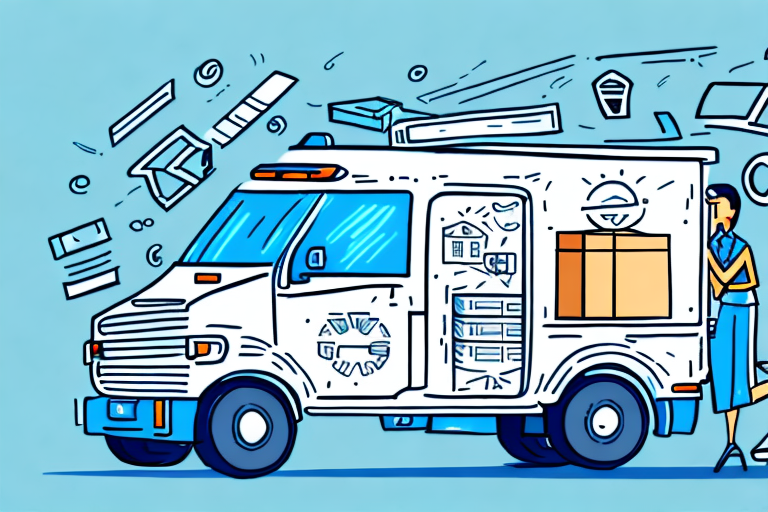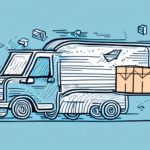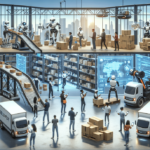Understanding the Importance of Efficient Delivery Services
In today's fast-paced world, efficient delivery services are crucial for businesses to remain competitive. Customers expect fast and reliable shipping, which necessitates optimizing the delivery service package to meet these growing demands. Studies indicate that 75% of customers consider delivery speed a critical factor in their purchasing decisions (NPD Report, 2022). This emphasis on timely deliveries not only enhances customer satisfaction but also fosters loyalty and repeat business.
Leveraging Technology and Data Analytics
Technology's Role in Streamlining Delivery Processes
Advancements in technology have significantly transformed the delivery industry. Tools such as GPS tracking, barcode scanning, and real-time updates allow companies to streamline their delivery processes and optimize routes. These technologies enhance delivery efficiency and facilitate better communication between drivers, dispatchers, and customers.
For instance, real-time tracking systems enable customers to monitor their packages' progress, reducing uncertainty and improving the overall delivery experience (Invespcro, 2023). Additionally, automation in sorting and dispatching can significantly reduce processing times and minimize human errors.
Utilizing Data Analytics for Route Optimization
Data analytics plays a pivotal role in optimizing delivery routes and times. By analyzing data such as delivery times, traffic patterns, and peak periods, businesses can identify the most efficient routes, thereby reducing delivery times and operational costs. Incorporating machine learning and artificial intelligence further enhances the ability to predict and adjust to real-time variables, ensuring deliveries are made promptly.
Moreover, analytics can assist in forecasting demand and adjusting staffing levels accordingly. This proactive approach ensures that businesses can meet delivery demands without overextending resources, ultimately leading to enhanced profitability and customer satisfaction (Harvard Business Review, 2020).
Identifying and Implementing Best Practices
Assessing Areas for Improvement
Before implementing changes, it's essential to identify areas within the delivery service package that require enhancement. This assessment can be conducted by analyzing delivery times, gathering customer feedback, and utilizing tracking software to monitor performance. Pinpointing specific areas for improvement leads to a more efficient delivery service package, which in turn increases customer satisfaction and revenue.
For example, evaluating packaging materials is crucial. Secure and appropriate packaging can minimize damage during transit, reducing customer complaints and returns. Additionally, adopting eco-friendly packaging materials not only appeals to environmentally conscious consumers but also enhances the brand's image.
Implementing Best Practices
Adopting best practices is vital for optimizing delivery services. This includes:
- Utilizing high-quality packaging materials to ensure product safety
- Maintaining a 24/7 customer service team to address inquiries and issues promptly
- Providing comprehensive training for drivers and staff to uphold service standards
- Offering diverse delivery options such as express and same-day delivery to cater to varying customer needs
Additionally, establishing a reliable tracking system allows customers to receive real-time updates and notifications about their deliveries, enhancing transparency and trust. Regularly reviewing and analyzing delivery data helps identify further areas for improvement, enabling continuous optimization of the delivery process.
Harnessing the Power of Customer Feedback
Customer feedback is invaluable for refining delivery services. Actively soliciting and analyzing feedback helps identify strengths and areas needing improvement. For example, consistent feedback regarding long delivery times may indicate a need for process optimization or additional resources.
Implementing a robust feedback system allows businesses to address customer concerns promptly and make data-driven decisions to enhance service quality. Positive feedback highlights effective practices that can be scaled, while constructive criticism provides insights into potential improvements.
Moreover, engaging with customers through feedback channels fosters transparency and trust, demonstrating a commitment to meeting their needs and enhancing the overall delivery experience.
Overcoming Common Challenges in the Delivery Industry
Addressing Logistical Challenges
The delivery industry faces numerous challenges, including unpredictable weather conditions, traffic congestion, and equipment failures. Overcoming these obstacles requires meticulous planning and the implementation of backup systems. For instance, having a pool of backup drivers and vehicles ensures that deliveries remain on schedule even when unexpected issues arise.
Investment in technology, such as route optimization software, can mitigate delays caused by traffic or adverse weather by dynamically adjusting delivery routes in real-time (Forbes, 2021).
Promoting Sustainability
The delivery industry also grapples with environmental challenges. The reliance on fossil fuels contributes to air pollution and climate change. To address this, many companies are transitioning to alternative fuel vehicles such as electric or hybrid models, which reduce carbon emissions and promote sustainability.
Furthermore, optimizing delivery routes through data analytics not only improves efficiency but also minimizes fuel consumption. Embracing sustainable practices not only benefits the environment but also resonates with consumers who prioritize eco-friendly businesses.
Cost-Effective Strategies for Maximizing Efficiency
Optimizing Delivery Routes
Optimizing delivery routes is a cost-effective strategy that can lead to significant savings. By analyzing delivery data to determine the most efficient routes, businesses can lower fuel costs, reduce vehicle maintenance expenses, and decrease delivery times. Implementing route optimization software ensures that deliveries are planned effectively, minimizing the distance traveled and avoiding congested areas.
Moreover, efficient routing contributes to lower operational costs and increased vehicle lifespan, further enhancing profitability (Logistics Management, 2023).
Implementing Technology Solutions
Investing in technology that streamlines the delivery process can yield substantial cost savings. Technologies such as GPS tracking and digital package tracking systems reduce errors and enhance accuracy, leading to fewer lost or misplaced packages. Additionally, automating routine tasks reduces the need for manual labor, lowering staffing costs and increasing operational efficiency.
Partnering with technology providers who offer integrated solutions can provide businesses with scalable tools that adapt to their growing needs, ensuring long-term cost-effectiveness.
Collaborating with Other Businesses
Forming partnerships with other businesses or delivery services can help share resources and reduce costs. Collaborative efforts may include sharing warehouse space, vehicles, or delivery personnel, leading to the optimization of resources and enhanced operational efficiency. By working together, businesses can expand their delivery capabilities without incurring significant additional expenses.
Such collaborations also enable businesses to reach a broader customer base and increase delivery capacity during peak periods, thereby improving service levels and customer satisfaction.
The Future of Delivery Services: Trends and Innovations
Emerging Technologies
The delivery industry is continuously evolving, driven by advancements in technology and changing consumer expectations. Emerging technologies such as delivery robots, drone delivery, and blockchain technology promise to revolutionize the industry. Delivery robots can navigate urban environments autonomously, reducing the need for human drivers and lowering operational costs. Drone delivery offers rapid and efficient delivery options, particularly in densely populated or hard-to-reach areas.
Blockchain technology enhances transparency and security in the delivery process by providing immutable records of transactions and enabling secure data sharing between stakeholders (Forbes, 2022).
Sustainable Delivery Solutions
As environmental concerns intensify, the delivery industry is focusing on sustainable solutions. The adoption of electric and hybrid delivery vehicles reduces carbon emissions and aligns with global sustainability goals. Additionally, companies are exploring eco-friendly packaging and implementing recycling programs to minimize waste and promote environmental responsibility.
Innovations such as smart lockers and consolidated delivery systems further contribute to sustainability by reducing the number of delivery trips and optimizing package distribution (GreenBiz, 2023).
Enhanced Customer Experience
Enhancing the customer experience remains a priority, with businesses leveraging technology to provide seamless and personalized delivery services. Features such as flexible delivery windows, real-time tracking, and personalized delivery options cater to diverse customer needs and preferences. By prioritizing the customer experience, businesses can increase satisfaction, foster loyalty, and differentiate themselves in a competitive market.
Integrating artificial intelligence and machine learning allows for predictive analytics, enabling businesses to anticipate customer needs and proactively address potential delivery issues (McKinsey, 2021).
Conclusion
Maximizing your delivery service package for optimal efficiency is essential in today’s competitive market. By understanding the importance of efficient delivery services, leveraging technology and data analytics, implementing best practices, harnessing customer feedback, overcoming industry challenges, and adopting cost-effective strategies, businesses can enhance customer satisfaction and drive profitability. Staying abreast of future trends and innovations ensures that delivery services remain agile and capable of meeting evolving consumer expectations. Prioritizing sustainability and customer feedback further solidifies a business's reputation as a reliable and responsible delivery provider. Embracing these strategies will position businesses to thrive in the dynamic landscape of delivery services.




















